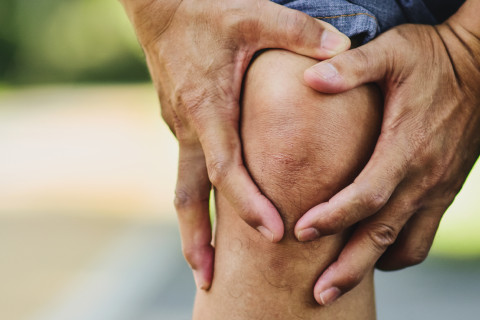The University of Eastern Finland is a partner in a new, six-year project focusing on knee osteoarthritis, which has been granted approximately 6.7 million euros of funding by the Novo Nordisk Foundation. UEF’s share of the funding amounts to 1.4 million euros.
The project is coordinated by Aalborg University in Denmark, and Lund University in Sweden is also a partner. The project seeks to develop a comprehensive predictive model for knee osteoarthritis and, ultimately, improve patient care.
Osteoarthritis (OA) is one of the leading causes of disability worldwide, with pain and reduced function as hallmark symptoms. OA can currently not be cured, and the available treatments are focused on improving symptoms. OA is a multi-scale and multi-factorial degenerative joint disease,with knee OA (KOA) being the most frequent.
Biomechanical factors play an important role in maintaining joint homeostasis and several early KOA interventions are aimed at altering the body-level biomechanics to reduce joint degeneration that occurs largely due to changes at the cell level. However, the relationship between levels, i.e., body, joint, tissue and cell, and its relationship to pain response, is currently poorly understood.
The new project seeks to tackle this challenge by bringing together mathematical modelling experts whose combined expertise covers multi-scale modelling, including mechanobiology and experimental tissue characterization of bone, cartilage and tendons with the world's leading scientist in pain mechanisms in KOA to establish the first comprehensive predictive model of KOA, capturing also the interaction between loading and pain. In addition to a fundamental understanding, the mathematical model also enables personalisation of the treatments based on prediction of expected outcome.
Initially, the researchers will develop clinically feasible measurement techniques to obtain model inputs. Hereafter, mathematical models of the body, joint, tissue and cell levels are researched and coupled to a model of the pain response to enable investigations of the relationship between KOA interventions and the multi-scale response. Validation activities are conducted to evaluate the accuracy of the sub-level models as well as the predictive capabilities of the multi-scale model in a cohort study initiated during the project. Finally, the predictive capabilities of the model are applied to design novel, personalized KOA interventions with the ultimate goal to improve patient care.
For further information, please contact:
Professor Rami Korhonen, University of Eastern Finland, Department of Applied Physics, rami.korhonen (a) uef.fi, tel. +358 40 355 3260



